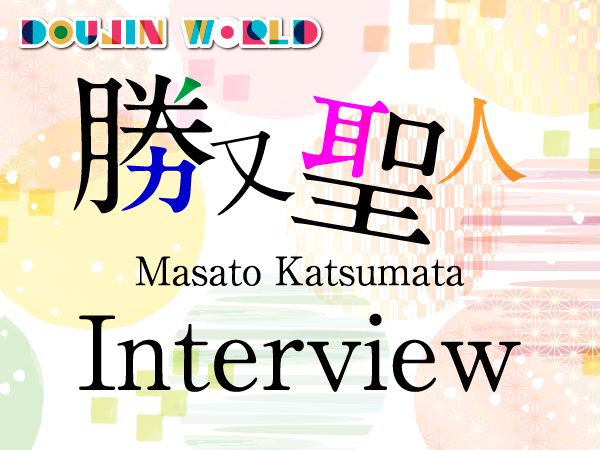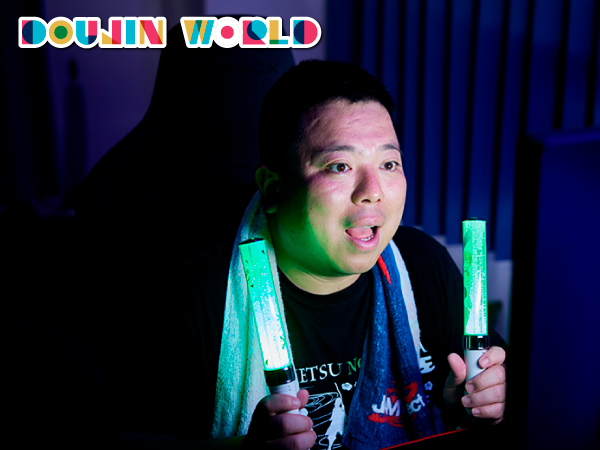2021.10.15
Turning Kanji into Art: Calligrapher Sokyo
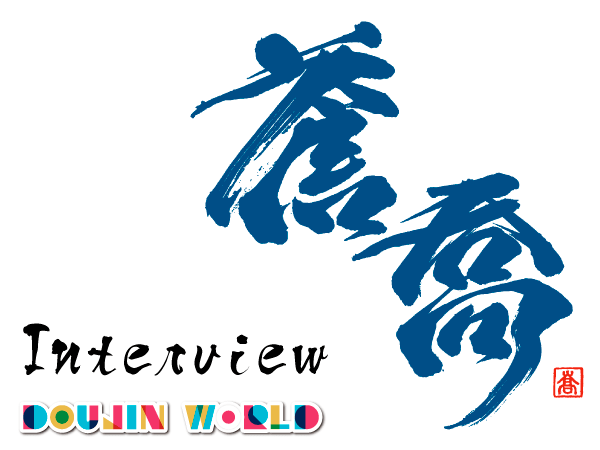
Our First-Ever Classical Arts Visitor!!
If you’ve studied Japanese or Chinese, then you’ll know that every Kanji character has its own meaning. Things and feelings are turned into pictures, which combine to form words. And some people, like calligrapher Sokyo, can turn those words into art.
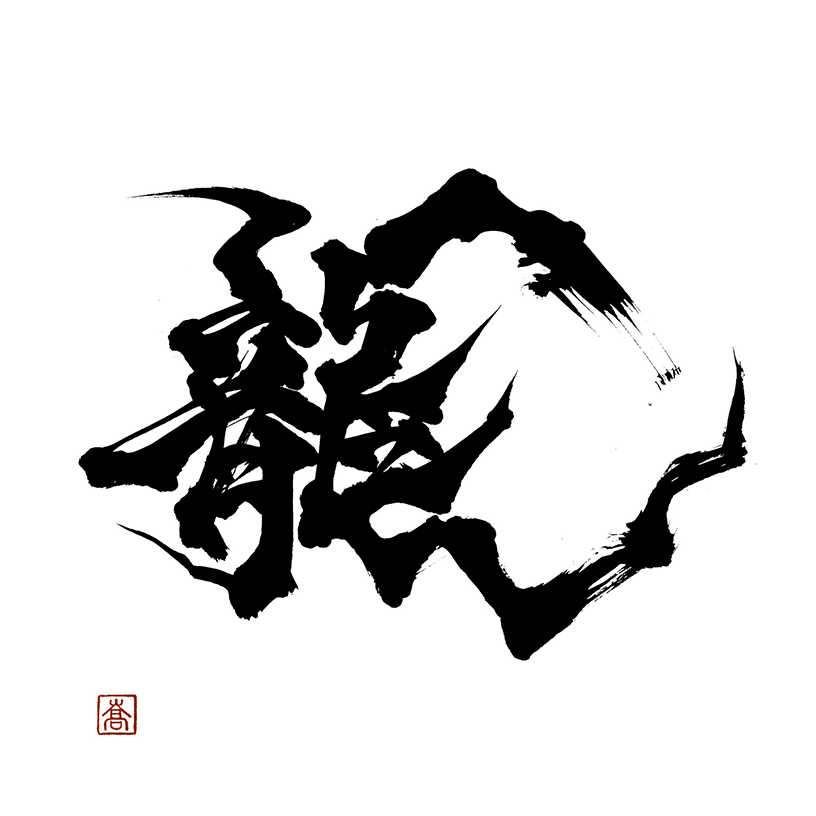
龍, “Ryu”, Dragon
“I originally started studying calligraphy for practical reasons, but gradually I made it my goal to write really beautiful characters, and now I’m focused on performance calligraphy and design. If I were to pick one, I guess I would say I’m a calligraphy designer.”
Sokyo incorporates anime and game culture into his calligraphy, and has even exhibited his work in France, the UAE, and Lituania. Soon he’ll have a piece hung up in New York’s Carnegie Hall as a representative Japanese artist!
“Nowadays I’m privileged to be recognized as a calligrapher, but I haven’t always liked calligraphy. In fact, I had really bad handwriting as a kid so my parents made me practice a lot (laughs).”
As it turns out, Sokyo became a calligrapher because of handwriting practice that just about everyone has to do.
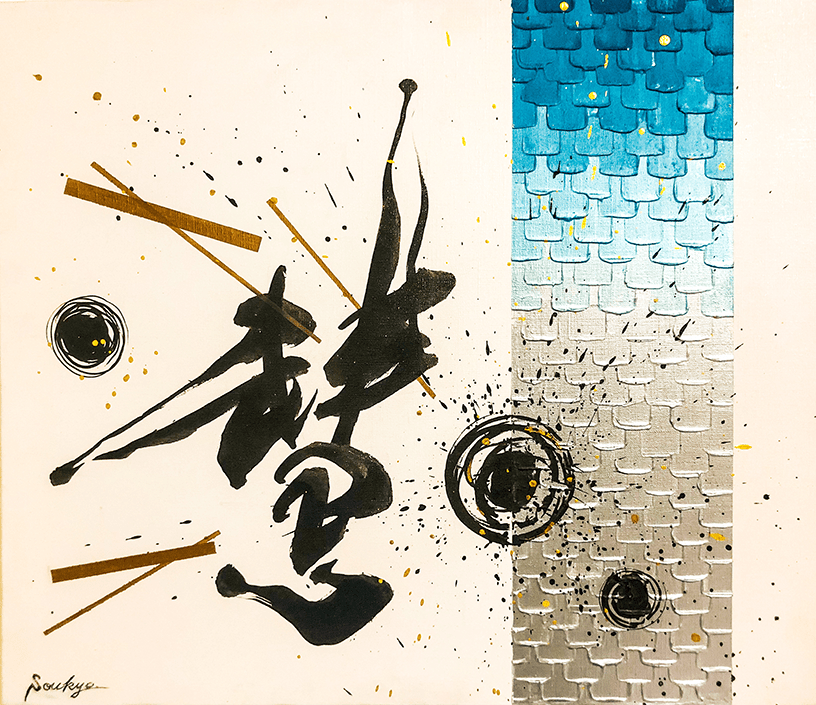
慧, “E”, Wisdom (exhibited in France)

雨, “Ame”, Rain (Exhibited in Abu Dhabi)
Thinking of Quitting
“It’s been 19 years since I started calligraphy. For 16 of those years, I basically wrote beautiful characters based on my master’s copybook. But in high school, I started to get pretty busy with after-school activities and exams, so I wanted to quit calligraphy so many times. But every time, someone from the Calligraphy Association would stop me. I actually worked in the food industry for a bit, because I love eating and cooking.”
Well, after all, not many people can survive on calligraphy alone.

悉達多, “Shittaruta”, Siddartha
“But then my sister happened to see some of my work and said, ‘Couldn’t you make money off of this?’ and actually brought me some commissions. Pretty much the only person who’d ever asked to see my calligraphy was my master, so it was a really fresh experience to have other people see my work and smile or tell me it’s amazing.”
Having single-mindedly practiced calligraphy for more than 10 years, Sokyo suddenly realized that he was good enough to inspire emotions with his art. So he traded in his pots and knives for a brush and took his first step to becoming a professional calligrapher.
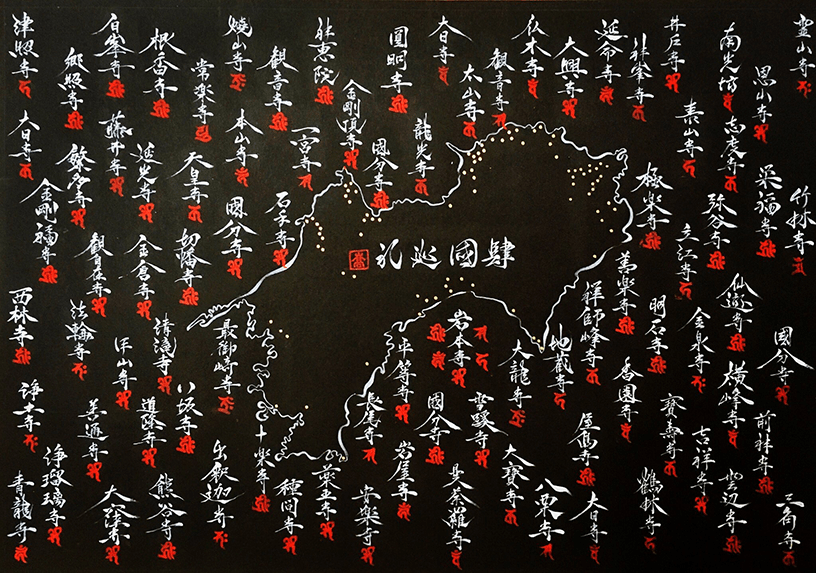
四国巡礼, “Shikoku Junrei”, Shikoku Pilgrimage

酒, “Sake”, Alcohol
Not Writing, but Painting Characters
For those of us who don’t practice calligraphy, we might have a tendency to think that it’s nothing but writing characters. So we asked Sokyo about what his process is when he receives a commission.
“Naturally people would think that. But sometimes it takes me a week to finish one piece. Take, for example, the character for ‘flower’ (花, hana). First, before actually writing it I go over lots of different designs in my head. Even though the meaning is simply ‘flower’, there are lots of different flowers, like sunflowers and lilies of the valley and monster flowers, so the character changes based on the image.”
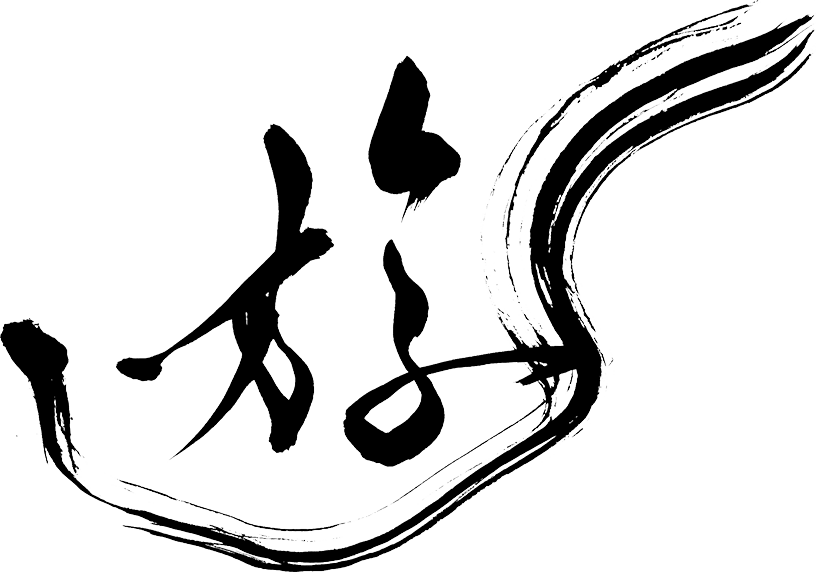
遊, “Asobi”, Play
Interesting…if we type “hana” on the computer, it’ll simply come up as 花 and that will be that, but Sokyo thinks of all the possibilities of the character when planning a work of calligraphy.
“After that, I just keep writing it. I practice over and over so I can compare it and adjust it to the ideal image of the person who requested it. I’ll write it dozens of times, and then I’ll pick a few to submit to the client.”
If you’re writing a word in a sentence, then it’s fine to just write it as long as the meaning comes across. But if it’s just one word, and you want to express more than the word, “just writing it” isn’t enough.
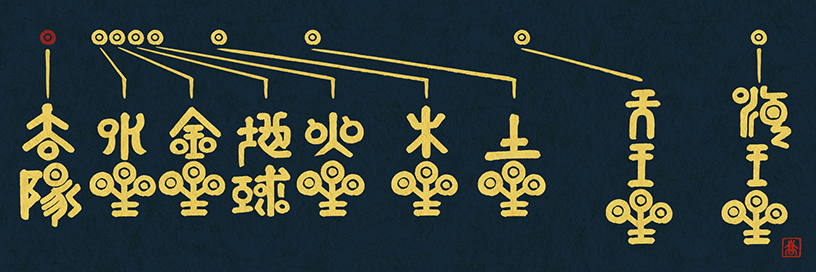
太陽系, “Taiyokei”, Solar System
“Yes, if it was just about writing characters, anyone could do it. That’s why I want to bring to the table something only I can make. Using my past experience in the food industry, my design studies in high school, and the things I’ve studied on my own, I want to write characters in a way that only I can write them.”
Hoping to Share the Culture of Calligraphy with Everyone
Calligraphy is a form of culture that has existed for thousands of years, but while it’s important to maintain its original tenets, it’s also necessary to adapt it over time. Just like the way kanji was formed, it will continue to change with the progress of time.
“I would love to have young people show an interest in calligraphy, not just in how the characters are beautiful or the calligraphy is good, but in the enjoyment of it as entertainment. Also, I like anime and video games, so I’m thinking about whether I can combine the two and really appeal to overseas audiences.”

絆, “Kizuna”, Bond
Lastly, we asked what Sokyo’s end goal for calligraphy is.
“My dream is to have a solo exhibition at the Louvre. And, in Japan, I want to have my calligraphy used in a Taiga drama (the NHK’s year-long historical drama).”
The young man who wanted to quit calligraphy because it was boring is no more. Sokyo can now say without a doubt that he loves calligraphy, so we hope he can continue to pave the way in the calligraphy world!
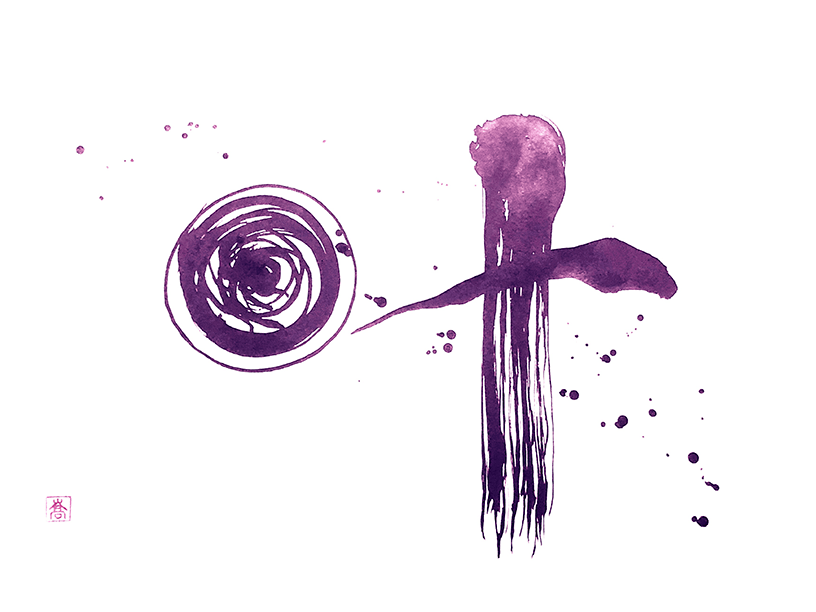
叶, “Kanau”, To Dream
- Sokyo
Twitter:@sokyo1226
Instagram:sokyo1226
Follow @doujinworld
Writer
Shiro Sato




